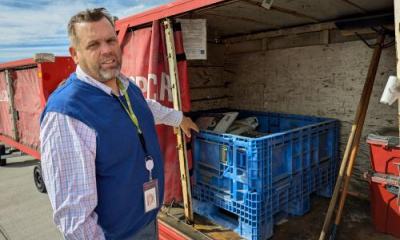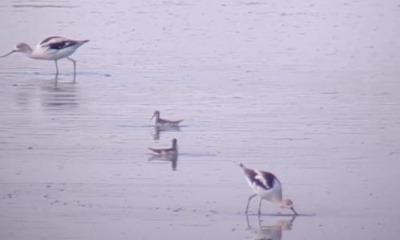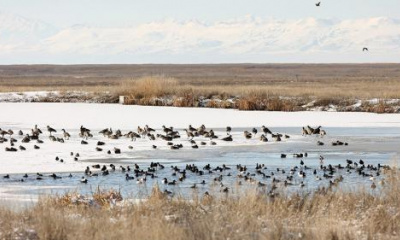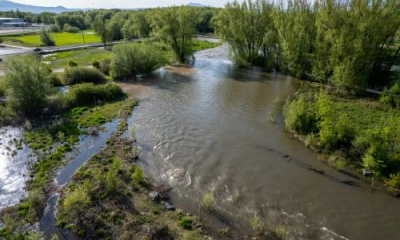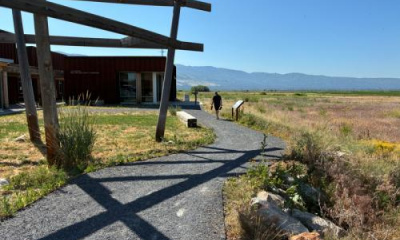Money could help improve Great Salt Lake wetlands
The Department of the Interior Wednesday announced more than $87 million in funding has been approved by the Migratory Bird Conservation Commission, providing the U.S. Fish and Wildlife Service and its partners the ability to help conserve, restore or enhance 315,823 acres of critical wetland and associated upland habitat for migratory birds across North America — including Canada and Mexico.
That money can hopefully help the wetlands at the Great Salt Lake, which make up more than 30 percent of the wetlands in Utah, including those at Farmington Bay, the Bear River and Weber County wildlife management areas. It would also help solve pressing problems of phragmites control at The Nature Conservancy’s Great Salt Lake Shorelands Preserve encompassing 4,500 acres along the eastern edge of the lake in Davis County.
The Great Salt Lake is home to more than 300 species of birds that breed, nest and feed in an area that is a critical part of the Pacific Flyway.
“We are grateful for the Migratory Bird Conservation and the U.S. Fish and Wildlife Service and other partners that allocate funding that benefits migratory birds and other wildlife species,” said John Luft, program manager of the Utah Division of Wildlife Resources Great Salt Lake Ecosystem.
Some birds travel thousands of miles to reach the Great Salt Lake — from Argentina for example — because it is such a critical site for their survival.
In fact, this week the Utah Division of Wildlife Resources was excited to announce that nesting pelicans had returned to nest on one of the lake’s islands for the first time in 81 years.
The money could also help Utah Lake, which has been engaged in a decades-long battle to restore the wetlands because of invasion of the phragmites, which is a reed that sucks up water and crowds out other vegetation, nesting habitat.
The commission approved more than $84.3 million in North American Wetlands Conservation Act grants matched by more than $139.8 million in partner funds. In addition, the commission approved more than $2.7 million from the Migratory Bird Conservation Fund to conserve habitat on two national wildlife refuges across two states. The acquisitions will expand public opportunities for hunting, fishing, wildlife observation and outdoor recreational access.
“The North American Wetlands Conservation Act is one of the most effective tools we have for migratory bird conservation around the country. Funding for wetland and national wildlife refuge conservation projects will be pivotal in maintaining healthy bird populations, uplifting local economies and improving public access to recreational activities for future generations,” said Interior Secretary Deb Haaland. “The funding announced today further supports the Biden-Harris administration’s America the Beautiful initiative, which is focused on pursuing locally led, collaborative and inclusive efforts to conserve, connect and restore America’s lands and waters.”
The Migratory Bird Conservation Commission has helped conserve much of the nation’s most important waterfowl habitat and establish or enhance many of the country’s most popular destinations for waterfowl hunting and birding.
“Wetlands are one of the most important ecosystems in the world, providing essential habitat for more than one third of the bird species that breed in North America and billions of migratory birds across the Americas,” said U.S. Fish and Wildlife Service Director Martha Williams. “Wetlands also help buffer communities from storms, sea level rise and are an important natural mechanism for clean water. Projects made possible through these grants will help protect, restore and enhance wetlands vital to migratory birds and many other species of wildlife and provide recreational opportunities and benefits for all Americans.”



